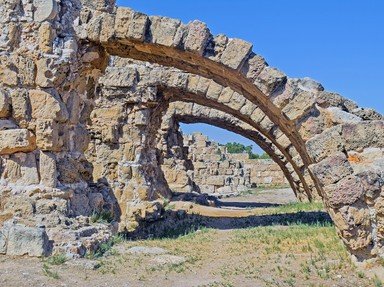Quiz Answer Key and Fun Facts
1. One of the world's most famous archaeological sites is located on and around the hill of Hissarlik in Turkey. What multi-layered city's ruins am I referring to?
2. At the entrance of which ancient Bronze Age city in the Greek region of Argolis, associated with Agamemnon in the Homeric poems, would you find the Lion Gate?
3. The site of Olympia comprises the ruins of a large religious sanctuary, where the Olympic Games were first organized in the 8th century BC. The photo shows a detail of the Palaestra, one of Olympia's most significant buildings. What kind of building was it?
4. This column, found in the archaeological site of Ephesus in western Turkey, is one of the few remaining fragments of one of the Seven Wonders of the World, a massive temple dedicated to which Greek goddess?
5. Known for its ancient theatre, Epidaurus was the site of Greece's foremost sanctuary dedicated to Asclepius, the god associated with what discipline?
6. This circular structure is one of the most frequently photographed buildings of what famous site - a sacred precinct on the slopes of Mount Parnassos, once believed to be the centre of the world?
7. The island of Samos in the Aegean Sea is home to a World Heritage Site that consists of two archaeological sites. One of them is named about which extremely influential philosopher and mathematician, who was born on the island?
8. The remains of Bouthroton (now Butrint), originally part of the kingdom of Epirus, form the largest and most important archaeological site of which present-day country, with coastlines on both the Adriatic and the Ionian Seas?
9. The site of Paestum boasts three amazingly well-preserved temples built in the Doric style. In which southern Italian region, also home to the iconic remains of Pompeii, will you be able to admire them?
10. In which Sicilian city - known as the birthplace of Archimedes - would you be able to visit the magnificent Greek theatre in the photo?
Source: Author
LadyNym
This quiz was reviewed by FunTrivia editor
trident before going online.
Any errors found in FunTrivia content are routinely corrected through our feedback system.
